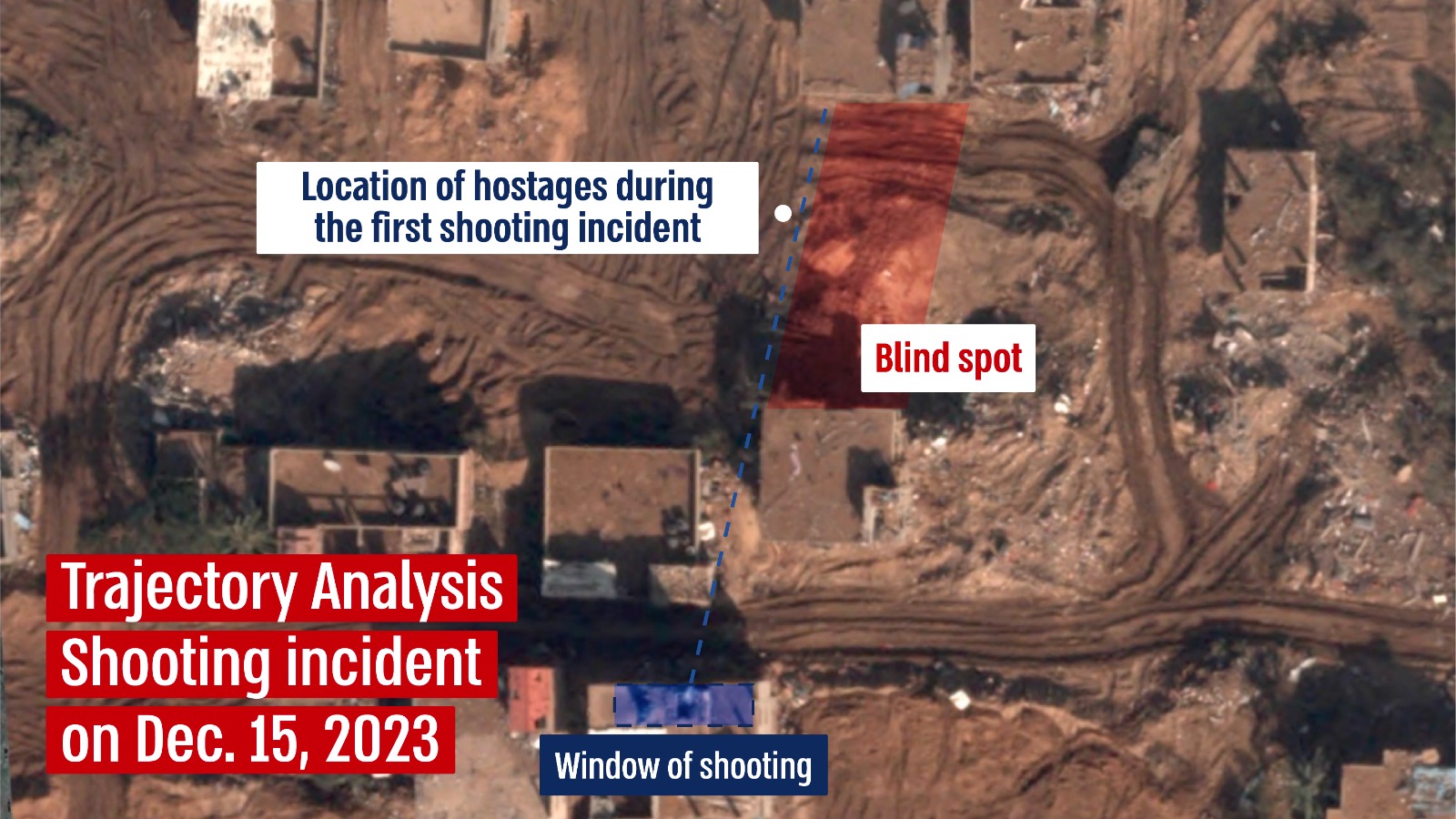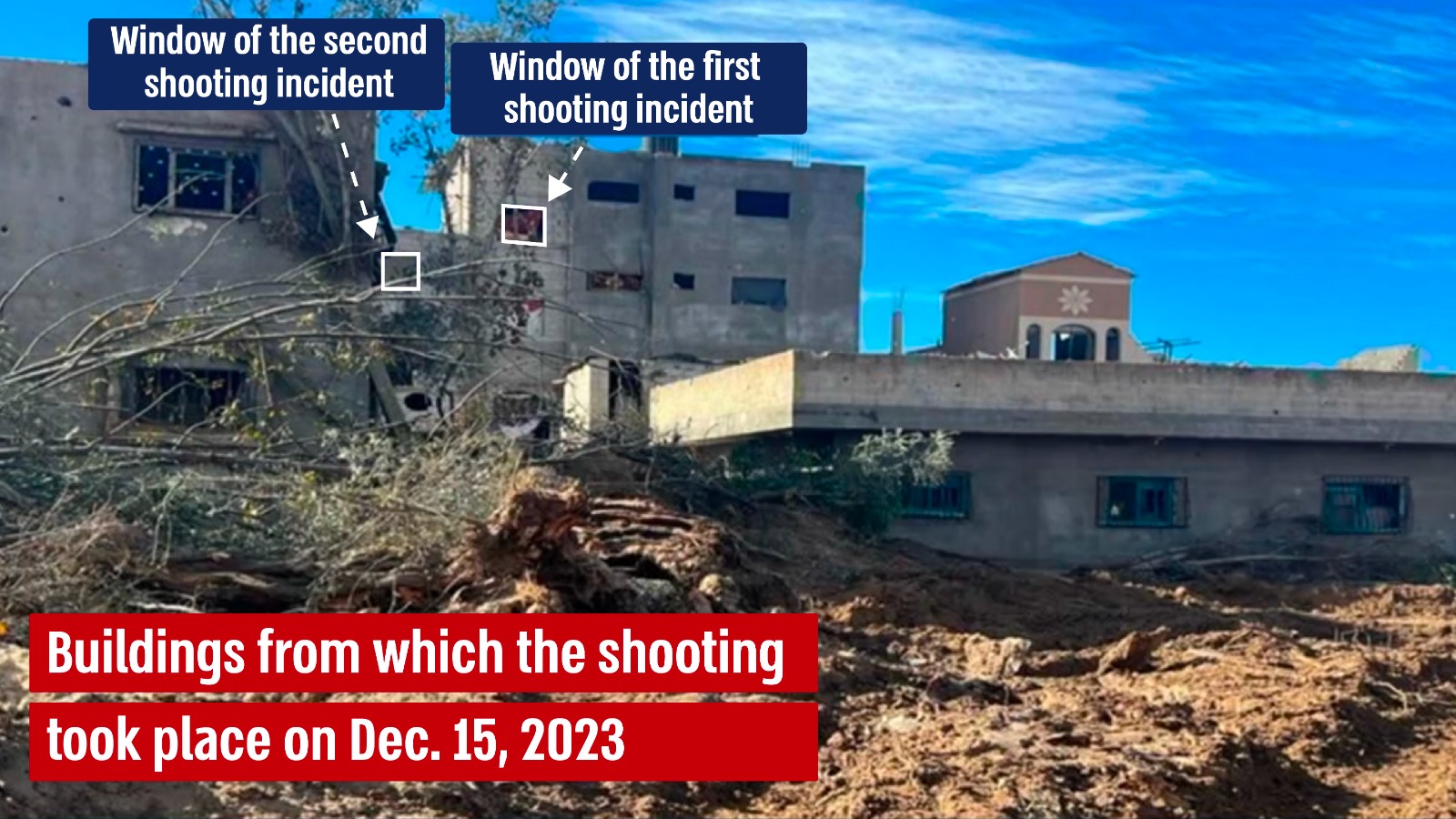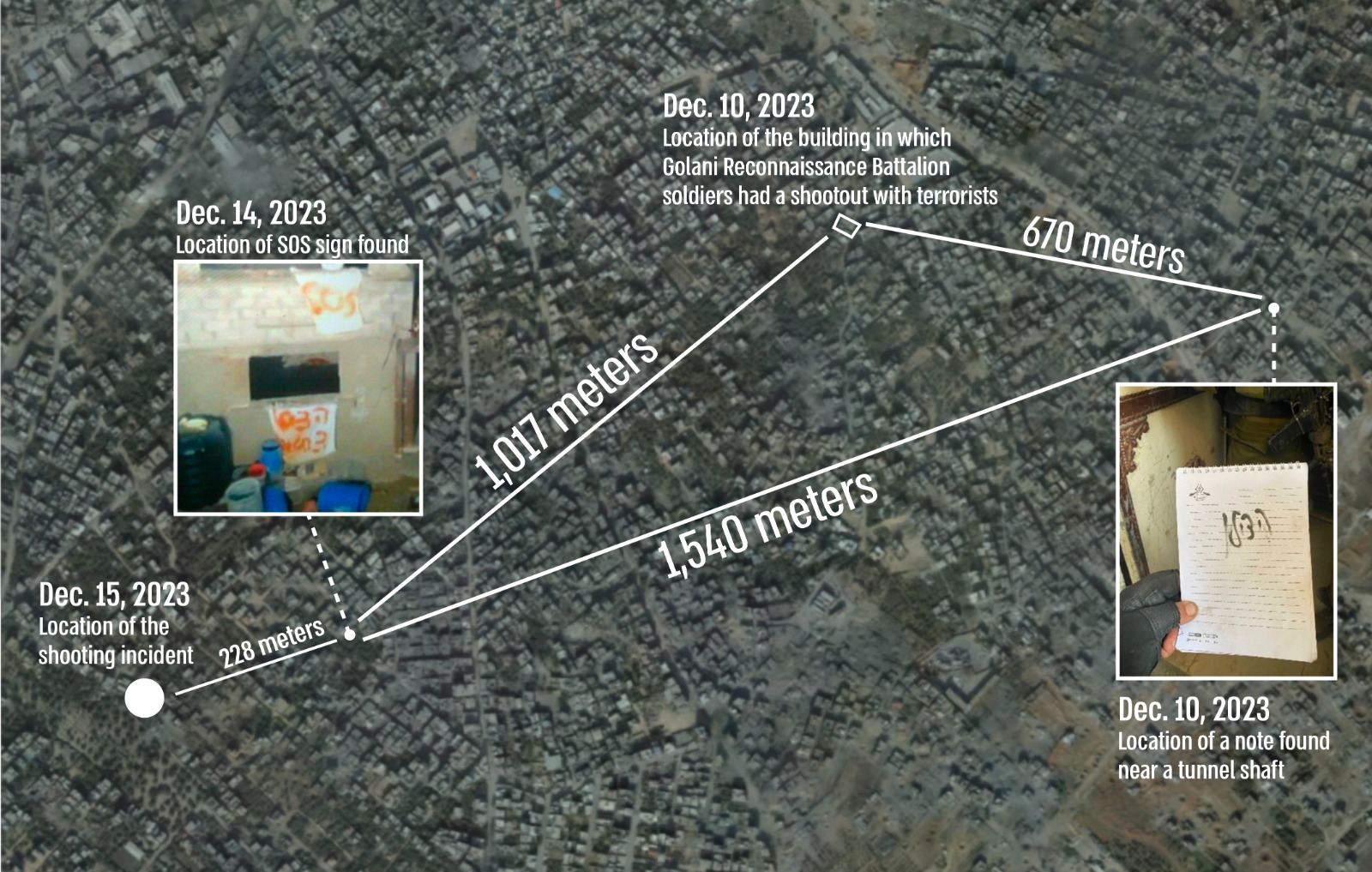The Findings of the Investigation into the Circumstances of the Deaths of 3 Hostages from IDF Fire
The findings of the investigation into the circumstances of the deaths of three hostages from IDF fire were presented this week to the Chief of General Staff, LTG Herzi Halevi, by the Commander of the Southern Command, MG Yaron Finkelman.
The findings are as follows:
- On December 15, 2023, during intense days of fighting in Shejaiya, an IDF soldier fired toward three figures, identified as threats, and hit two of the hostages who were killed. The third figure fled.
- The commanders gave orders to hold fire in order to identify the third figure. After approximately 15 minutes, the battalion commander heard shouts in Hebrew of "help" and "they are shooting at me," and gave additional orders to hold fire, calling out in Hebrew "come toward us." The figure emerged from a building toward the forces. Two soldiers, who did not hear the order due to noise from a nearby tank, shot at and killed the third hostage.
- From the investigation and analysis of the findings and aerial footage of the area, it was revealed that the hostages were walking shirtless, and one of them was waving a white flag, standing at a point with limited visibility relative to the position of the soldier that fired the shot.
- At the end of the event, after clearing and scanning the area, a suspicion arose that the individuals were hostages. The bodies were transferred for examination in Israel, after which it was confirmed that they were three Israeli hostages.
- Prior to the event, on December 10, 2023, a note with the Hebrew writing "Help" was found at the exit of a terror tunnel in the Shejaiya area. Alongside the note, an ID of a Hamas operative was found. The note was examined, but no information emerged linking it to the presence of hostages in the area. The forces in the field considered it as an attempt by Hamas to deceive and lure the forces into an ambush.
- Additionally, on December 10, 2023, troops of the Golani Reconnaissance Battalion operated in the Shejaiya area and operated in several buildings to locate terrorists and weapons. The forces broke into a building and sent in a dog from the "Oketz" K-9 Unit for explosives detection. A battle ensued in which the terrorists shot at the dog and towards the forces from within the building. The forces returned fire toward the sources of the shooting and eliminated a terrorist in the area.
- During the battle conducted by the Golani Reconnaissance Battalion’s, the forces’ commanders heard cries for help in Hebrew - "help" and "hostages" - from within the building. The forces interpreted this as a terrorist deception attempt. The engineering unit operating with the force identified the building as suspected of being rigged with explosives, and therefore the force refrained from entering. Some of the forces heard the cries but suspected it was an attempt by the terrorists to draw the forces inside the building to harm them, as had happened in the past.
- Based on these suspicions, the forces exited the building and directed fire from helicopters and tanks towards the building and the area. In these strikes, five terrorists trying to escape were assumed to have been killed.
- From scans conducted in the building after the shooting incident on December 15, 2023, a camera was found on the dog from the “Oketz” K-9 Unit that was killed. The findings indicate that the hostages were in the building where the force operated, and the terrorists who were killed were those holding the hostages. In the footage found on the dog’s camera, the hostages are not seen, but their voices are heard crying for help. At the end of the battle, after the terrorists holding the hostages were killed, the hostages likely fled the building.
- On the morning of December 14, 2023, signs with the writing "SOS" and "Help, 3 hostages" were identified by drone footage on a building 200 meters from where the hostages were killed. Near the building, blue barrels commonly found in rigged areas, which the forces encountered in the Shejaiya area, were spotted, thus it was suspected as a trap.
Conclusions of the Investigation:
The investigation revealed that the command ranks had information about the presence of hostages in the Shejaiya area and even took actions to prevent strikes on locations suspected of having hostages inside. In this case, there was no intelligence about either building where the hostages were in. Also, as part of the assessments on the issue, special forces brigades were prepared in every combat zone, immediately available for intervention in case a force identified a building with hostages inside. However, there was insufficient awareness among the forces in the field in the case of hostages reaching IDF forces, or when the forces would encounter hostages during the clearing of buildings as part of combat and not as part of a special operation to free hostages.
IDF soldiers involved in the incident experienced complex combat situations in the days preceding the incident and were in a state of high alert for a threat. During the battles, they encountered deceptions by the enemy and attempts to draw them into pits and buildings rigged with explosives.
Summary by the Chief of Staff:
The Chief of the General Staff concluded that it was a difficult event with very difficult outcomes. The IDF failed in its mission to rescue the hostages in this event. The entire chain of command feels responsible for this difficult event, regrets this outcome, and shares in the grief of the families of the three hostages.
The Chief of Staff determined that the hits on the hostages could have been prevented. Alongside this, the Chief of Staff clarified that there was no malice in the event, and the soldiers carried out the right action to the best of their understanding of the event at that moment.
The Chief of Staff emphasized the utmost importance of adhering to standard operating procedures. In a situation where there is no immediate threat and the identification is not a clear enemy, there is a need for a moment of examination before firing, given the opportunity. This action is necessary to prevent, among other things, incidents of our forces firing at our forces. In this case, the three hostages were not moving threateningly and held up a white flag; therefore, it was right to confirm the identification before firing. The pressurized conditions and operational environment made it difficult for the soldiers to implement these aspects.
The Chief of Staff summarized and said, "The shooting at the hostages should not have occurred – this shooting did not match up to the risk and the situation. However, it was carried out under complex circumstances, and in intense combat conditions under a prolonged threat. We, the commanders, must ensure that the operational instructions are clear, and that the operation of the forces in the field weighs additional aspects, which are expressed in the application of the soldiers' and commanders' discretion in the field. The standard operating procedures are necessary, and they are also intended to protect us, so that we do not kill our own forces. They set and impact fateful decisions, as happened in this event."
The Chief of Staff discussed the required lessons on the communication between the Intelligence-Operational Command for the Return of the Hostages by MG (Res.) Nitzan Alon, to the Southern Command and the brigades in the field, with an emphasis on improving communication, transferring information from the command to the forces, and reporting on suspected signs of hostages’ presence from the field to the command.
The Chief of Staff instructed all commanders to learn the lessons from the incident and immediately convey them to the fighting forces to prevent the recurrence of similar cases as best as possible. In addition, he instructed that awareness is raised amongst the forces in the field to the presence of hostages in the combat area, including their locations, their photographs, and various findings about them.
The Chief of Staff noted that the investigation was thorough and in-depth and was conducted during combat due to the difficult outcomes and the obligation to immediately draw lessons for the continuation of the fighting.
The findings were presented to the families of the hostages. The IDF shares in the families’ grief and will continue to accompany them.




